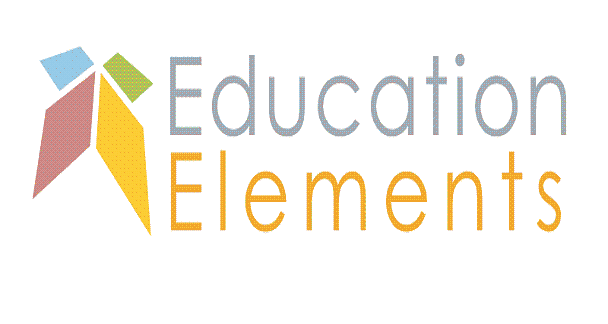Illiteracy
Definition :It is often defined negatively, because it has always been measured comparing with literacy rate data.
"In ability of the .people of the society to read a statement written in any language.” (Population Census Organization Govt. of Pakistan, July 1998)
The meaning of illiteracy is different in different societies even it can be different in the censuses of the same country.
Present Situation
Pakistan consists of the most illiterate societies of the world in spite of its so many seminars, high flown speeches and claims and of specific budget allocations. It is the only country in the world where adult education programme was started twice but failed in desired results. In 1964, a large sum was spent on adult education but the programme failed due to lack of people’s interest in the programme. In 1973, a large sum was spent but it remained only paper work and a lip-service. In 1985, a project in the name of LAMEC was started as a pilot project which was started in Pakistan in the name of “Nai Roshni” with cost of billions of rupees but 1988 evaluation of the project showed no satisfactory results with the closure of the project but upcoming governments kept it alive in files in the name of literacy but with zero contribution. It is estimated that the amount spent on the promotion of adult education would have changed the rate of literacy, had it been spent on the promotion of regular education.As far regular education, its condition is not much better than other such programmes. The efforts of promotion of education in Pakistan are in a way laughable. For example, in 1960-65, 18,000 schools were opened but no building for a school was built. For 1970-79, no planning for education was done and private schools were nationalized and quality education door was closed and the end of competition between private and Govt. school was to drag the standard to lowest level. In 1980-90, 36,000 schools were opened and out of 72,000 schools only 29,000 schools were without any building. 16,000 schools had one room, 19,000 had two rooms whereas 8,000 schools were with more than two rooms but there was none of the schools where proper furniture for students and teachers was available. This condition has remained the same for the last fifteen years including the year 2005.
The permission to open private schools has made education expensive. In govt. schools, there has been no betterment in provision of furniture and other facilities but lack of teachers in these schools is affecting the efficiency of the schools. A report-primary education in Pakistan-UNESCO-sponsored World Bank 2000:
Present situation as given below:
“Despite the bombast emanating from the education ministry, bureaucracy and politicians in Islamabad and the provincial capitals, teaching remains a low salary, low status occupation that is now the last refuge of the unemployed and the incompetent, No wonder than that the quality of education that is provided never very high is falling steadily year after year.”
1. Low Priority Assigned by the Govt :
After getting freedom, Pakistan has never given preference to proper attention to the education department with no long-term policy to "promote literacy. Short-term schemes were always started and left unfinished, unless this policy is not changed, the end of illiteracy will remain a farce. “Govt. of Pakistan is spending 2% of its GNP on education whereas UNESCO suggests at least 3% of GNP but for Pakistan this is 6% for next ten years which has never been acted upon."
(Daily The Muslim September 27, 1988)
2. Role of Rural Education Institutions :
Rural institutions play an important part in lessening illiteracy.
“Despite the bombast emanating from the education ministry, bureaucracy and politicians in Islamabad and the provincial capitals, teaching remains a low salary, low status occupation that is now the last refuge of the unemployed and the incompetent, No wonder than that the quality of education that is provided never very high is falling steadily year after year.”
Causes of Illiteracy
Illiteracy was a problem even before Pakistan came into existence but its intensity went on increasing whereas most developed and some developing countries have got rid of this problem in a well-planned manner, we are being sunk in this marsh more and more. There are countries like Sri Lanka, Singapore, Malaysia, Brazil and Chile that have achieved the double of the rate of literacy than that of Pakistan. Let us have a survey of the condition responsible as a hindrance in this work in this modern world.1. Low Priority Assigned by the Govt :
After getting freedom, Pakistan has never given preference to proper attention to the education department with no long-term policy to "promote literacy. Short-term schemes were always started and left unfinished, unless this policy is not changed, the end of illiteracy will remain a farce. “Govt. of Pakistan is spending 2% of its GNP on education whereas UNESCO suggests at least 3% of GNP but for Pakistan this is 6% for next ten years which has never been acted upon."
(Daily The Muslim September 27, 1988)
2. Role of Rural Education Institutions :
Rural institutions play an important part in lessening illiteracy.
A. Shortage of schools in rural area :
Pakistan with reference to education always ignored the rural sector. Till 2000, out of 54,000 villages 10,000 villages were without a school for boys or girls. In 16,000 villages, Schools were present but without a building.
Pakistan with reference to education always ignored the rural sector. Till 2000, out of 54,000 villages 10,000 villages were without a school for boys or girls. In 16,000 villages, Schools were present but without a building.
B. Lack of facilities :
87% schools of the villages have no proper furniture and building even without a better place. Weather'changes and change the position of school and primary education is not less. then an adventure.
87% schools of the villages have no proper furniture and building even without a better place. Weather'changes and change the position of school and primary education is not less. then an adventure.
C. Unpleasant environment of schools :
The dilapidated schools in villages present a scene in making the environment uninteresting enough and along with punitive attitude of teachers make it more horrible. This can be guessed by the school learning rate from first to fifth class is 35%. In 1988, 3 million students took admission in Class I and only one million students reached Class five.
(Report, working Group for the 7th Five Year Plan 1988-93)
3. Traditional and Obliterated Ideas :
‘The general concept of rural people about education is against literacy. Most of the parents do not think education necessary for their children, especially for girls and oppose the women education thinking it against their traditions. The following data shows this attitude. The school-going girl student is half that of the boys in Pakistani and it is 1/3 in rural areas. In khyber pakhtunkhwa this proportion is 4:1 and in Baluchistan 5:1. (Economic Survey 1978-88 for the 7th Five Years Plan)
4. Old Style Forming :
The dependence of economy of the rural society of Pakistan is agriculture, sheep, goat grazing and fishery. Agriculture and fishery profession are old and based upon oldest method and require more manpower. Therefore, parents prefer to take their children to their profession instead of sending them to schools. The following data explains this fact that rural society has half of the rate of literacy than that of the urban society which has the parents traditional attitude and need on the reason thereof it causes illiteracy.
5. Unemployment of Educated Persons:
Because of unemployment of educated persons, the promotion measures of remaining fighting literacy rural areas have been badly affected and these have suffered a set back. People think that there is not advantage of education when they are not finding employment. They think it better if they had joined their children with them to work by hand instead of sending them to schools. Even in urban society, the situation is also more or less the same but it is more teasing for urban society. There is a report of national press to explain the situation.
According to half-yearly data of 2005, out of 150 million, 48 million people live in cities. 15 million population is able to do employment but only 1.4 million have the job, 4.8 million do part-time jobs and out of remaining 9 million, 6 million are self-employed or being women are confined to homes whereas 3 million are in search of employment who are a terrible underground bomb for urban environment.
The dilapidated schools in villages present a scene in making the environment uninteresting enough and along with punitive attitude of teachers make it more horrible. This can be guessed by the school learning rate from first to fifth class is 35%. In 1988, 3 million students took admission in Class I and only one million students reached Class five.
(Report, working Group for the 7th Five Year Plan 1988-93)
3. Traditional and Obliterated Ideas :
‘The general concept of rural people about education is against literacy. Most of the parents do not think education necessary for their children, especially for girls and oppose the women education thinking it against their traditions. The following data shows this attitude. The school-going girl student is half that of the boys in Pakistani and it is 1/3 in rural areas. In khyber pakhtunkhwa this proportion is 4:1 and in Baluchistan 5:1. (Economic Survey 1978-88 for the 7th Five Years Plan)
4. Old Style Forming :
The dependence of economy of the rural society of Pakistan is agriculture, sheep, goat grazing and fishery. Agriculture and fishery profession are old and based upon oldest method and require more manpower. Therefore, parents prefer to take their children to their profession instead of sending them to schools. The following data explains this fact that rural society has half of the rate of literacy than that of the urban society which has the parents traditional attitude and need on the reason thereof it causes illiteracy.
5. Unemployment of Educated Persons:
Because of unemployment of educated persons, the promotion measures of remaining fighting literacy rural areas have been badly affected and these have suffered a set back. People think that there is not advantage of education when they are not finding employment. They think it better if they had joined their children with them to work by hand instead of sending them to schools. Even in urban society, the situation is also more or less the same but it is more teasing for urban society. There is a report of national press to explain the situation.
According to half-yearly data of 2005, out of 150 million, 48 million people live in cities. 15 million population is able to do employment but only 1.4 million have the job, 4.8 million do part-time jobs and out of remaining 9 million, 6 million are self-employed or being women are confined to homes whereas 3 million are in search of employment who are a terrible underground bomb for urban environment.










0 Comments